Washington, D.C./World War II Memorial
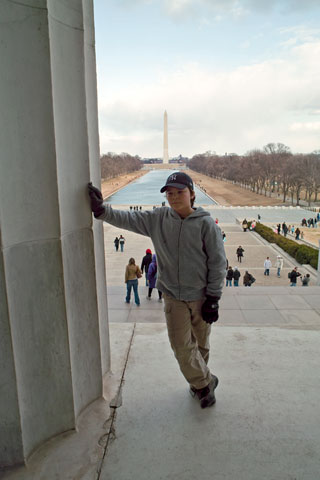
My son at the Lincoln Memorial -- © Brian Rose
Classicism is the dominant style of architecture in Washington, and any deviation from it is difficult to pull off--the Pei designed east wing of the National Gallery is, perhaps, the best effort. I like the sharp angles and the way it engages the triangle formed by Pennsylvania Avenue slicing across the grid.
The classicism of the Lincoln and Jefferson memorials as well as the design of the Capitol building express the early American idealism symbolized by Greek and Roman antecedents. The cool formality of classical design was meant to offer rationality and civilization in a largely undeveloped new world. That meaning remains clear and easy to decipher even today. The problem now in building on the Mall, is that reinterpreting classicism in a modern context often leads to unintended consequences.
I'd read the many critiques of the recently completed World War II memorial located just west of the Washington Monument, and while expecting the worst, I hoped that it would be less off putting seen in person. After all, there are plenty of less than inspiring buildings in Washington, and with few exceptions, we have learned to live with their mediocrity. (The Kennedy Center by Edward Durell Stone still rankles, however.)
So... I finally have seen the WWII memorial.
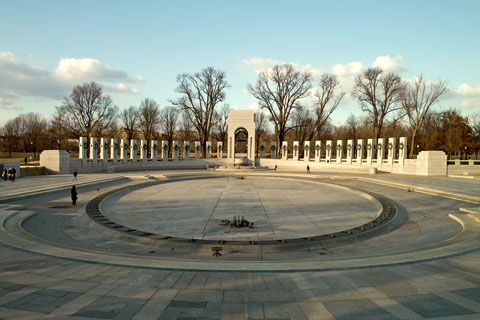
World War II Memorial -- © Brian Rose
Empty. Cold. That was my first reaction on this blustery President's day. The Lincoln Memorial and the Vietnam Memorial were filled with visitors--both have central focuses of attention. The Vietnam Memorial is a procession down along the wall of names and then up again on the other end. The Lincoln Memorial, of course, focuses on the seated statue inside the columned hall.
The WWII memorial is a multitude of elements: a fountain (vast stone oval in the winter), pillars, arches, wreaths, eagles, etched quotations, bas relief friezes, wall of stars, and more. All of these elements, rather than cohering into one statement seem to be a grab bag of features meant to satisfy the project commissioners and donors.
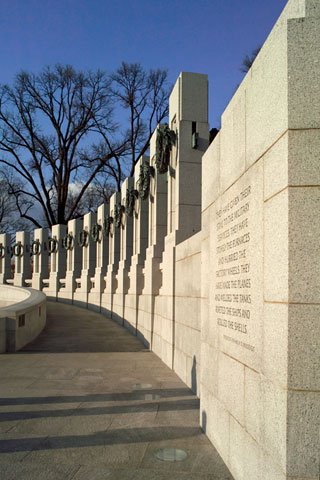
World War II memorial -- © Brian Rose
The unfortunate echoing of Nazi and Soviet architecture is unmistakable, and those who claim not to see it are either willfully oblivious or disingenuous. The architect, Friedrich St. Florian, and the leaders of the effort to build the memorial--Bob Dole most prominently-- ignored the howl of criticism directed at the design before it was built. They convinced themselves that what they were creating was dignified, heroic, and expressive of the ultimate victory achieved in the war.
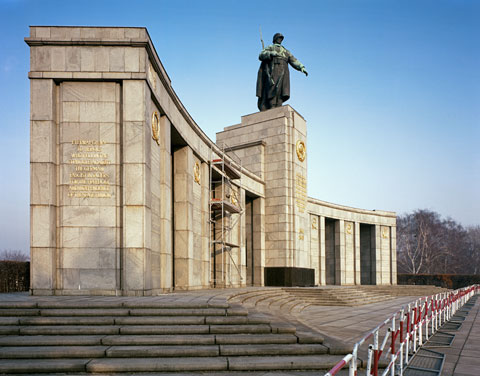
Soviet war memorial, Berlin -- © Brian Rose
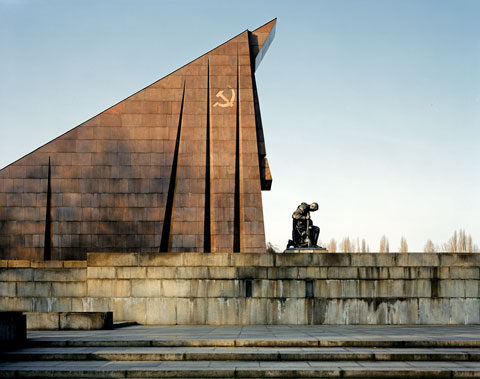
Soviet war memorial, Treptow Park, Berlin -- © Brian Rose
For sure, there are many people who defend the memorial in those terms, who are moved in the presence of it, but they neglect the sensibilities of the rest of us who cringe at the dissonance on display--making it difficult, if not impossible, to honor, remember, and pay our respects to those who died for country in World War II, the very purpose of the memorial.
The World War II memorial will undoubtedly persist as a jarring note on the Mall for decades to come. One can only hope that some future generation will have the courage to replace it with something more felicitous. For now, visit the beaches, the landscape, the cemeteries of Normandy where the connection to the war and to those who sacrificed their lives remains palpable to all.

0 Comments:
Post a Comment
Links to this post:
Create a Link
<< Home